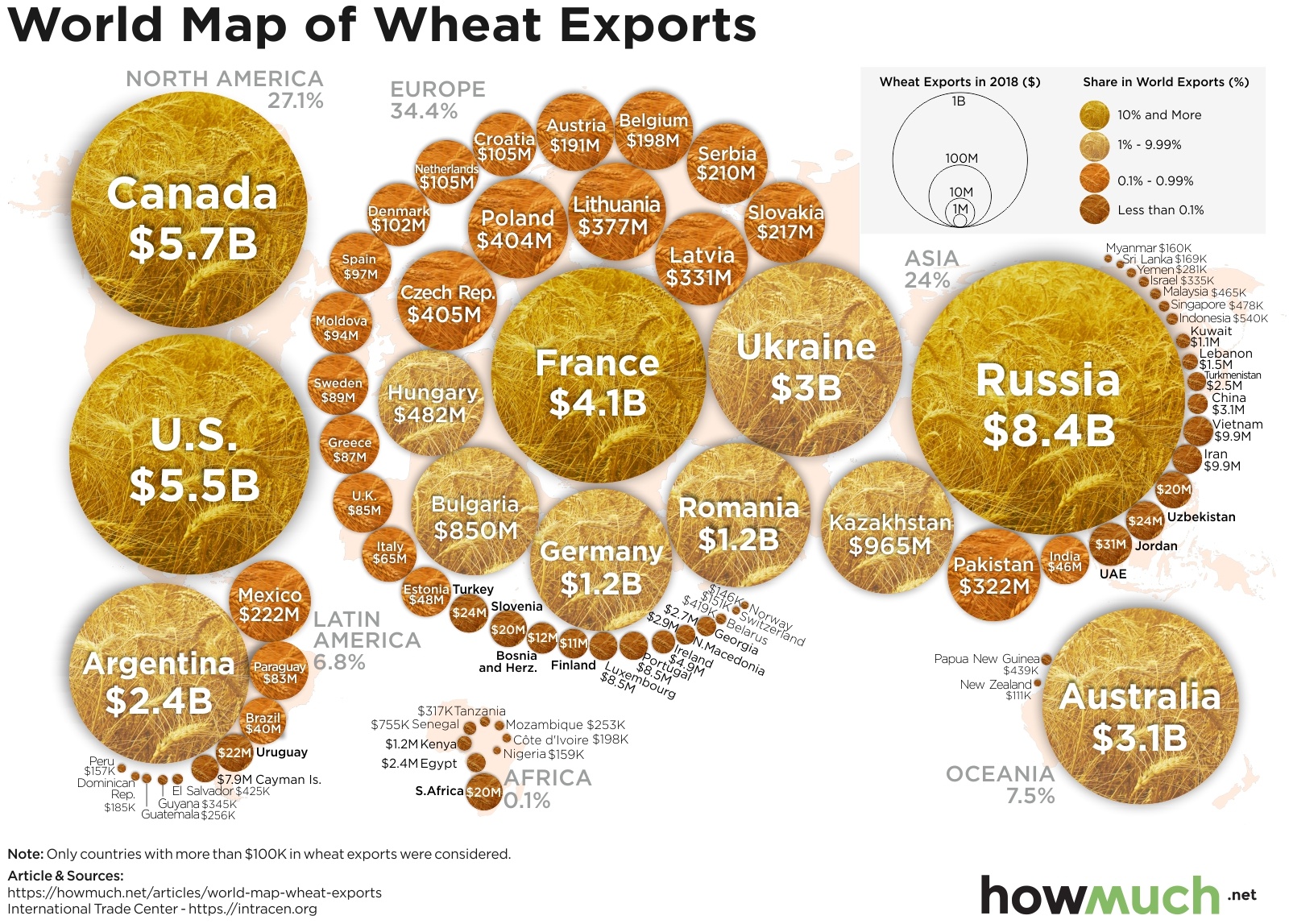Agricultural production is one of the mainstays of the economy, accounting for 3% of the world’s GDP and almost 30% of global employment. One of the most widely grown crops in the world is wheat, which can be used to make products such as bread, alcohol, and baked goods. Our new visualization reveals which countries are responsible for the most wheat exports in 2018.
Q3 2019 hedge fund letters, conferences and more
Use this visualization
- The total value of worldwide wheat exports was $41.1 billion in 2018.
- The value of worldwide wheat exports decreased from $49.2 billion in 2013.
- By continent, Europe has the greatest share of the world’s exports, at 34.4%. Africa has the least, at 0.1%.
- The top third exporting countries--Russia, Canada, and the U.S.--are responsible for almost half of wheat exports (47.65%).
The information for this visualization comes from the International Trade Centre, which details the statistics for each country that exports wheat and meslin. Our visualization is a map of the world, in which each country is represented by a circle corresponding to its wheat exports. The higher the value of wheat exports, the larger the circle. In addition, the color of each circle corresponds to the country’s share of worldwide wheat exports, with darker shades of brown representing lower percentages and lighter shades of brown representing greater percentages. All values are expressed in U.S. dollars.
Top 10 Wheat-Exporting Countries
- Russian Federation: $8.4 billion, 20.51% of world exports
- Canada: $5.7 billion, 13.87% of world exports
- United States of America: $5.5 billion, 13.27% of world exports
- France: $4.1 billion, 10.04% of world exports
- Australia: $3.1 billion, 7.54% of world exports
- Ukraine: $3.0 billion, 7.31% of world exports
- Argentina: $2.4 billion, 5.88% of world exports
- Romania: $1.2 billion, 2.98% of world exports
- Germany: $1.2 billion, 2.84% of world exports
- Kazakhstan: $965 million, 2.35% of world exports
Even though wheat exports are dominated by only a few countries, that doesn’t mean that agriculture isn’t important to other countries’ economies. For example, Brazil, Vietnam, and Germany collectively grow almost a third of the world’s coffee. For some countries such as Venezuela, exporting agricultural products is the only way to survive in troubled economic times.
Aside from influencing individual countries’ economies, agriculture can be a catalyst for environmental change. Agriculture has led to many negative consequences for the environment, such as deforestation, pollution, and soil damage. However, some say that investing more in sustainable agriculture such as regenerative growing practices is the way to go if we want to combat climate change. As the world’s population continues to grow and resources become more constrained, innovative farming practices will become even more of a necessity.
Given constant changes in the economy and environment, how do you think wheat production will change over time? Please let us know in the comments.
Article by HowMuch

